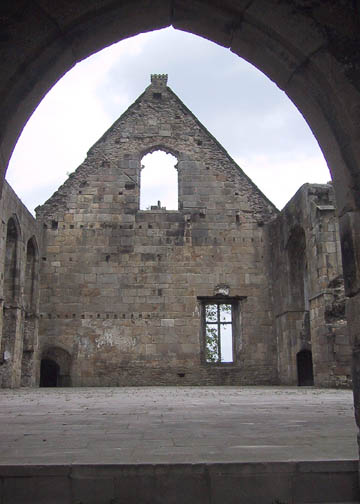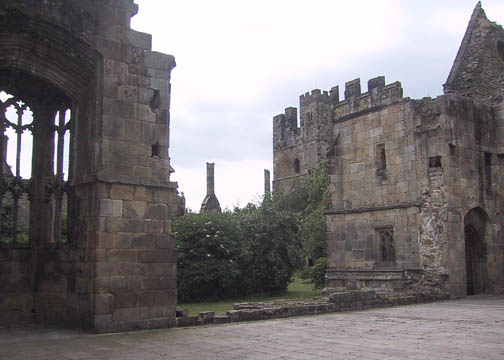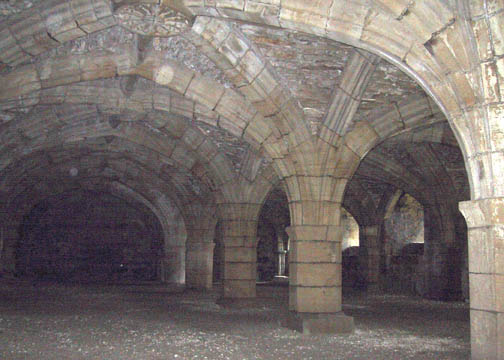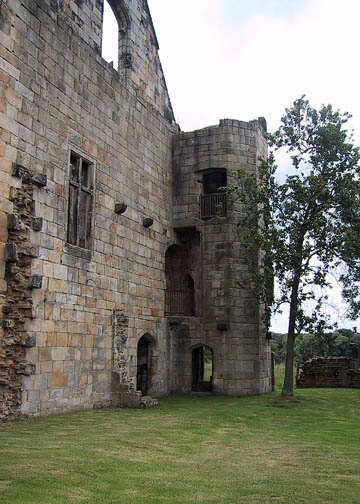 |
 |
| Following the farcical conference of Westminster during which the Casket Letters were produced in evidence against Mary, she was taken further south from Bolton Castle to Tutbury in Derbyshire in January of 1569. Her new jailor was George Talbot Earl of Shrewsbury and his wife, Bess of Hardwick. The Shrewsburys were immensely rich and possessed a range of properties across central England. By March however, Shrewsbury reported that Mary was severely ill with "grief of the spleen", symptoms which her doctor attributed to "windy matters ascending to the head". This is how Mary came to be moved to the more comfortable prison of Wingfield Manor, now an imposing ruin outside the village of South Wingfield in Derbyshire, where she was lodged in the north-east tower with views across the valley. However, by April of that same year, her whole face had swollen up and she sat weeping silently and uncontrollably at supper, perhaps as a result of hearing the terrible fates some of her supporters and friends has suffered in Scotland. While Wingfield was being cleaned, Mary would be moved to Chatsworth, another property belonging to Shrewsbury. Shrewsbury himself fell very ill during the summer, displaying similar symptoms to those of Mary, namely "hot choleric vapours" rising to his head. |
 |
 |
| Despite her illness, Mary's time at Wingfield was not completely miserable. Shrewsbury, like many other English statesmen until the 1580's, was conscious of the fact that Mary could potentially replace Elizabeth as queen of England, should she die prematurely. He would therefore have much to gain from showing kindness and leniency to the Scottish queen. On the other hand, it was necessary to reassure Elizabeth that he was not allowing Mary too much freedom. Mary kept herself occupied with embroidery, card games, conversations with Bess of Hardwicke, music and occasional visits from the local nobility. One of Mary's highlights was to be allowed to take the waters at nearby Buxton, a cause of much anxiety for Elizabeth who feared that she would endear herself to the local people. Other than Chatsworth and Tutbury, Mary would also be moved to Sheffield Castle and Sheffield Manor, as each property was periodically being cleaned. She enjoyed occasional rides and hawking with Shrewsbury, and even had up to ten horses, three grooms and a farrier at one point. She obtained a greyhound, several small dogs, caged birds from France, turtle doves and barbary fowls. She was also allowed to practice archery and lute-playing, and she even introduced a billiard table for the benefit of her household. |
 |
 |
Wingfield Manor is open all year except 24th to 26th December and 1st January. Closed between 1 and 2 pm in the winter. Tel.: 44+ (0)1773 832060. Dogs are not allowed and parking is on public road only. There is a 5 minute walk up to the Manor from the road.
Wingfield Manor is administered by English Heritage. |





